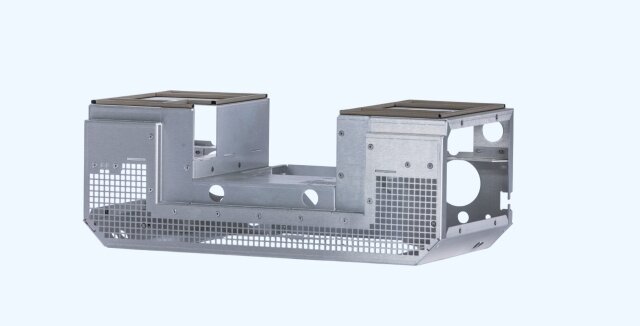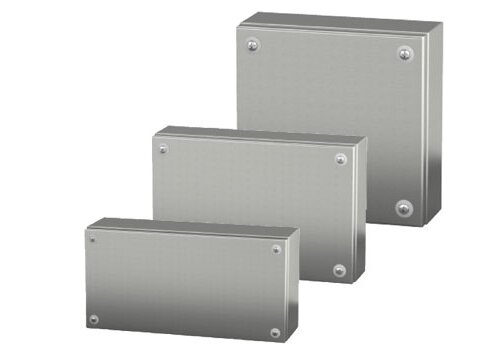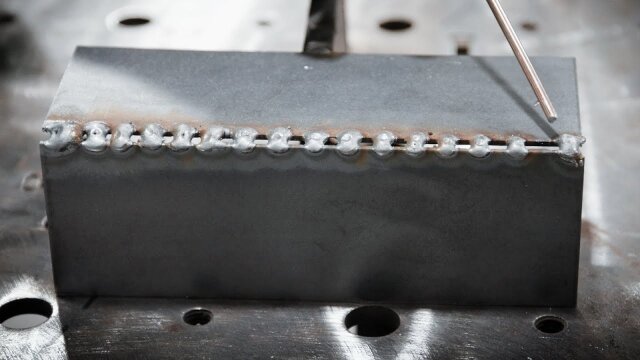Many industries find welding titanium difficult because it reacts easily with other elements. If titanium comes into contact with oxygen during welding, it can turn brittle and lose strength. Laser welding provides a precise and low-distortion method to solve this problem. It produces strong welds while keeping titanium’s natural qualities intact.
This guide will explain how laser welding works with titanium, its advantages, and the steps needed to achieve consistent, high-quality results.
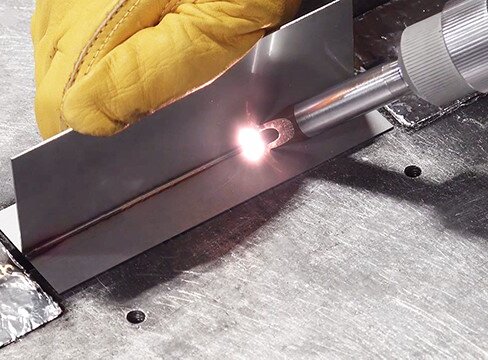
What is Laser Welding?
Laser welding uses a focused light beam to melt and join metal surfaces. The beam applies heat to a small, controlled area, creating deep, narrow welds and limiting heat from spreading to nearby material. It is beneficial for thin sections, delicate parts, and complex shapes.
When heated, titanium reacts fast with oxygen, nitrogen, and hydrogen, making it brittle. To avoid this, welding must happen in a clean, well-shielded space. Even a short exposure to air at high temperatures can harm the weld. Maintaining heat and shielding gas control is key to making strong and clean joints.
Step-by-Step Process for Laser Welding Titanium
Here is a simple shop-floor process. Follow each step to keep welds clean, strong, and repeatable.
Step 1: Prepare the Work Area
Clean the weld area in an enclosed station, glovebox, or sealed shroud. Use high-purity argon or helium gas, ideally 99.999%. Check all hoses, fittings, and seals for leaks. Set up a trailing shoe and, if needed, a backside purge system for complete shielding.
Step 2: Clean the Titanium Surfaces
Remove grease, oil, and dirt with acetone or isopropyl alcohol and lint-free wipes. Use a dedicated stainless steel brush or nonwoven pad to remove the oxide layer. Wipe the joint again after brushing. Wear nitrile gloves to prevent recontamination, and start welding soon after cleaning to avoid re-oxidation.
Step 3: Secure the Workpieces
Clamp the parts so the joint has an even fit with no gaps. Add tack welds under complete shielding to control distortion, spacing them evenly to stabilize the joint. Check alignment with gauges or pins before welding. Install purge dams or sealing tape for closed joints to maintain good backside shielding.
Step 4: Set Laser Parameters
Adjust the laser based on the material thickness. For a thin sheet between 0.5 and 1.5 mm, a fiber laser with 200–500 W continuous power, a spot size of 0.10–0.30 mm, and a travel speed of 12–25 inches per minute is a good starting point. For thicker sections, use higher power and slower travel to achieve full penetration.
Focus the beam at or slightly below the surface. Use pulse mode for thin or heat-sensitive areas. If filler wire is needed, match the alloy and keep the feed rate low.
Step 5: Start the Welding Process
Start with a shielding gas pre-flow for a few seconds before turning on the beam. Set the torch gas flow to about 20–35 CFH and the trailing shoe to 25–45 CFH.
Begin the backside purge for closed joints before welding. When possible, lead in on a tab to stabilize the molten pool. Keep the beam centered on the joint and maintain a steady travel speed, adjusting if penetration changes.
Step 6: Maintain Shielding During Cooling
Keep shielding gas flowing until the weld cools below a dull red. A clean weld will show a silver to light straw color. Blue or gray color means contamination. Let the part cool completely inside the protected area, without exposure to air drafts. Turn off the gas only after the joint is cool to the touch.
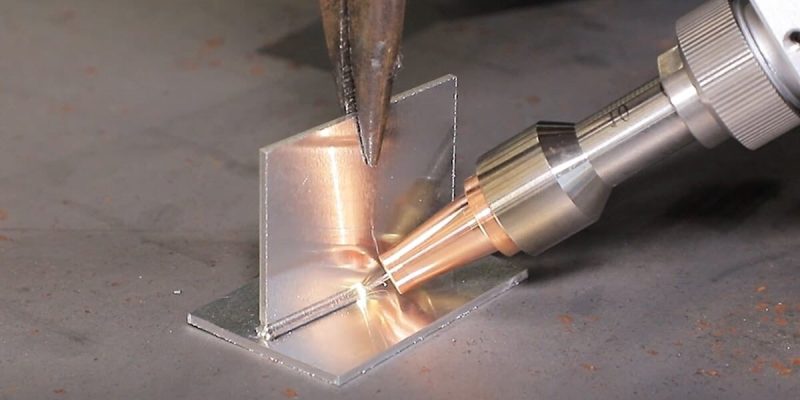
Properties of Titanium That Affect Welding
Titanium has unique physical and chemical traits, which make it valuable but also harder to weld. Understanding these traits helps in picking the right welding method and controlling each step of the process.
Strength-to-Weight Ratio
Titanium is as strong as many steels but weighs only about half as much. This makes it ideal for uses where strength and lightness are needed, such as aerospace and motorsports. Because of this high strength, welds must match the base metal’s performance to avoid weak points.
Corrosion Resistance and Oxidation Behavior
Titanium naturally forms a thin oxide layer that protects it from corrosion. This allows it to perform well in seawater and harsh chemical environments. However, heat can damage this layer during welding. Without good shielding, oxidation can set in and weaken the weld.
Thermal Conductivity and Expansion
Titanium has low thermal conductivity. Heat stays near the weld instead of spreading quickly. This helps achieve deep welds but can also cause uneven heating in the surrounding metal. Its low thermal expansion helps reduce distortion during welding.
Reactivity at High Temperatures
When heated, titanium easily reacts with oxygen, nitrogen, and hydrogen, creating complex, brittle compounds in the weld. To prevent this, welding must occur in a well-shielded environment, often using inert gases like argon to keep the weld zone clean.
Fundamentals of Laser Welding Titanium
Laser welding titanium is a precise joining method that uses focused light energy. Its success depends on knowing how the laser interacts with titanium and how the weld is kept safe from contamination.
How Laser Welding Works?
A high-energy laser beam is directed at the joint between two titanium parts. The beam’s light energy turns into heat, melting the metal in a small, controlled area. When the molten pool cools, the parts fuse into one solid piece. Because the heat is so concentrated, the weld is deep and narrow with little distortion in nearby metal.
Types of Lasers Used for Titanium Welding
Fiber lasers and Nd:YAG lasers are the most common lasers for titanium. Fiber lasers offer high efficiency, steady output, and precise control, making them well-suited for thin materials and fine details. Nd: YAG lasers give good penetration and flexible beam delivery, making them useful for welding complex shapes or hard-to-reach areas.
Importance of Shielding Gas in Titanium Welding
Titanium must be shielded from the air during welding. This is usually done with high-purity argon or helium. The shielding gas flows over the weld to block oxygen, nitrogen, and hydrogen. Without this protection, the weld can become brittle or crack. For complete coverage, shielding often extends to the back of the weld and continues until the metal has cooled.
Benefits of Using Laser Welding for Titanium
Laser welding brings many advantages when working with titanium. These benefits make it a top choice for industries that demand strong, precise, and reliable welds.
High Precision and Accuracy
The laser beam can be focused to a very small point, giving tight control over where and how deep the weld goes. This is especially valuable for small or delicate parts where accuracy is critical.
Minimal Heat-Affected Zone
The laser applies heat in a very concentrated spot. This keeps the surrounding metal cooler and reduces the heat-affected zone. As a result, titanium’s strength and natural properties are better preserved.
Strong, Clean Welds with Low Distortion
Laser welding creates narrow, deep welds with smooth surfaces. Because the heat input is low, parts are less likely to warp or bend. This produces strong joints that often require little to no extra finishing.
Suitability for Complex Geometries
The focused beam can reach tight or awkward spaces and weld intricate shapes. This makes laser welding ideal for parts with complex designs or hard-to-access joints, such as those in medical devices or aerospace components.
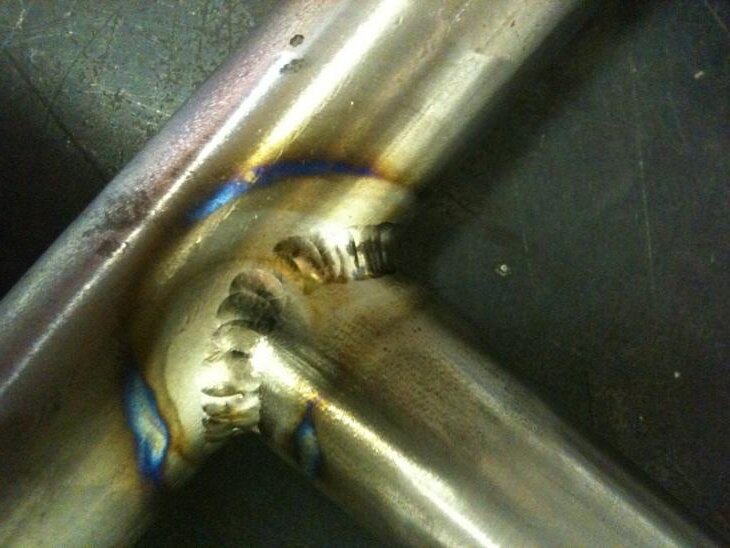
Process Parameters for Best Results
Getting the best results when laser welding titanium depends on controlling several key settings. Each parameter affects weld quality, appearance, and strength.
Laser Power and Beam Focus
For most thin to medium titanium sheets, welders often work at around 1.5 to 3 kW. This is enough power to melt the metal cleanly without burning through it. If the power is set too high, the weld can end up with too much spatter or even holes.
Beam focus shapes how the heat is delivered. A minor focus point gives deeper penetration, which works well for thicker parts. For thin sections, slightly widening the focus helps spread the heat and lowers the risk of burn-through. Many workshops adjust the focus by a fraction of a millimeter to get the right balance.
Travel Speed and Welding Depth
Travel speed decides how much heat stays in the metal. Moving slowly gives the weld more heat, but too much can cause discoloration or make the joint brittle. Going too fast can leave the weld shallow or incomplete. For typical titanium sheet jobs, many welders work at a pace that finishes a 100 mm seam in a few seconds while still getting a smooth, full-depth joint.
Welding depth depends on the job design and part thickness. For structural parts, full penetration is usually the goal. The aim is to reach the root of the joint without overheating the edges.
Shielding Gas Flow Rate and Coverage
Titanium needs strong protection from the air when it’s hot. Argon is the most common shielding gas, and it’s usually kept flowing both during and after the weld. Too little gas can let oxygen in, making the weld dark and weak, while too much gas can stir up the air and cause the same problem.
The safest approach is a steady flow that thoroughly covers the weld until it cools. The finished bead will stay bright silver on well-protected welds instead of turning blue or purple. In aerospace work, this clean color is a quick sign that the weld stayed contamination-free.
Applications of Laser-Welded Titanium
Laser-welded titanium is chosen in industries with strong, light, and corrosion-resistant parts. Its accuracy and consistency make it a good fit for many advanced products.
Aerospace and Defense Components
Laser-welded titanium is used in industries where strength, light weight, and corrosion resistance are critical. Its precision and reliability make it suitable for many high-performance products.
Medical Devices and Implants
Medical devices must be safe for the body and made with high precision. Titanium meets both needs, and laser welding gives smooth, clean joints. It is common in surgical tools, bone implants, and dental fixtures.
Automotive and Motorsport Parts
Performance vehicles use titanium for its strength and lightness. Laser welding is applied to exhaust systems, suspension arms, and frame parts. The process delivers repeatable welds that endure heat, vibration, and stress.
Marine and Offshore Structures
Titanium is resistant to saltwater corrosion in marine and offshore work. Laser welding is used for propeller shafts, underwater housings, and support frames. Precise welds help these parts maintain their strength in tough, wet conditions.
Conclusion
Laser welding titanium is a precise process that produces strong, clean joints with minimal distortion. It focuses a high-energy beam on the weld area, using high-purity shielding gas to protect the molten metal. This approach helps maintain titanium’s strength, corrosion resistance, and shape stability.
If you need a dependable method for titanium welding, we offer precision laser welding services designed to meet your exact requirements. Contact us today to discuss your project and get professional support for your production needs.
Hey, I'm Kevin Lee

For the past 10 years, I’ve been immersed in various forms of sheet metal fabrication, sharing cool insights here from my experiences across diverse workshops.
Get in touch

Kevin Lee
I have over ten years of professional experience in sheet metal fabrication, specializing in laser cutting, bending, welding, and surface treatment techniques. As the Technical Director at Shengen, I am committed to solving complex manufacturing challenges and driving innovation and quality in each project.


